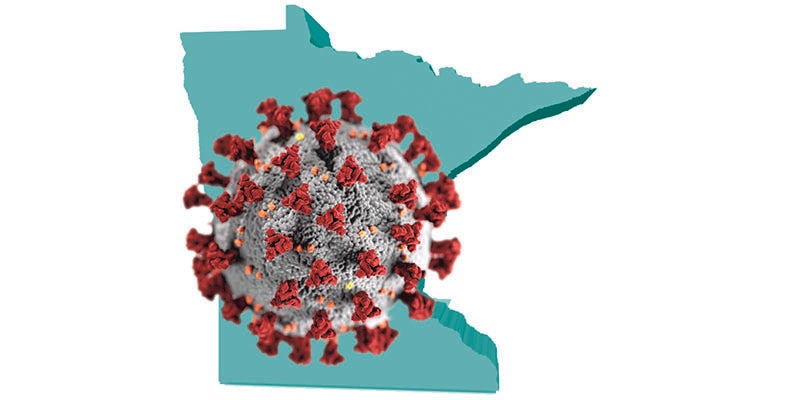State data shows disparities in race, ethnicity of who’s getting vaccinated
Published 7:34 pm Friday, March 5, 2021
|
Getting your Trinity Audio player ready...
|
By Catharine Richert
More than two months into the state’s COVID-19 vaccination rollout, state officials have released data that shows that the vast majority of Minnesotans vaccinated so far are white.
The data release comes after Gov. Tim Walz tweaked the state’s vaccine distribution strategy to focus on vaccinating 70 percent of people in Minnesota who are 65 or older before moving on to other priority groups. The update reflects federal policy that has made older residents a priority, because they have suffered the most hospitalizations and deaths over the course of the pandemic.
But Minnesota’s plan has been met with criticism by some physicians and other advocates because they say it leaves communities of color behind. More than 90 percent of the state’s population of people 65 and older identify as white.
The state is employing a metered vaccine rollout, in which identified priority groups become eligible for vaccination at specific times. As of now, Minnesotans eligible to be vaccinated according to state rules include health care workers; educators and child care workers; residents, caregivers and staff of long-term care facilities; and anyone 65 or older.
And while the majority of COVID-related deaths in Minnesota have occurred in the 65-and-older age group, when adjusted for age, Minnesotans of color have been proportionally more likely to contract COVID-19, be hospitalized for it and die from it compared to white Minnesotans, even if they are younger.
Earlier this week, Walz signaled that the state’s COVID-19 vaccine rollout so far had not effectively targeted groups disproportionately affected by the virus.
“We’re going to see through data [that] we are under-vaccinating communities of color,” he said. “This is an issue we’re all going to have to work on.”
People of color in Minnesota are more vulnerable to the worst impacts of COVID-19, due to a host of factors embedded in decades of economic and health-related systemic racism. They’re more likely to work in jobs that have been deemed essential in the pandemic — often front-line work that requires frequent interaction with the public — and they’re more likely to have underlying health conditions that put them at a higher risk of developing severe cases of COVID-19.
So far, white Minnesotans have received shots in higher proportions compared with communities of color. For instance, about 10 percent of Black Minnesotans 15 years old or older have received at least one shot of the vaccine, while nearly 19 percent of white Minnesotans who are 15 or older have been vaccinated.
The trend plays out among seniors, too — a large group currently prioritized by the state. In this group, about 38 percent of Black seniors have gotten vaccinated, while 45 percent of white seniors have gotten shots. The percentage of Native American seniors vaccinated hovers just under 40 percent, as does the percentage of seniors who are Asian or Pacific Islanders.
The data released Friday covers only around 85 percent of vaccinated Minnesotans for whom data is available. The state says it will update the data every Friday, and is working with health care providers administering the vaccine to increase the amount of data available.
Complications of gathering race and ethnicity data
State officials say gathering race and ethnicity data around people who are being vaccinated has been spotty so far because of legal barriers.
For years, the state Health Department has operated under the assumption that state law prevents them from requiring health care providers and public health departments administering the vaccine from reporting race and ethnicity of the people they vaccinate.
But the Minnesota Department of Health’s legal staff revisited the statute recently and settled on a different interpretation: Providers are now required to report this to the state Health Department.
For the last few weeks, the Health Department has been working to overlay this data with existing electronic medical record information it has access to to develop a more robust view of how well the state has vaccinated people of color so far.
This information will be used to develop more targeted strategies to make sure that people of color are able to access the vaccine going forward, state infectious disease director Kris Ehresmann said.
“It’s important to know who has gotten the vaccine but also who hasn’t. Are there gaps? Are we missing particular groups? And how can we use this data to make sure everyone is having access to vaccines,” she said.
Ehresmann said that baked into the state’s plan are a number of strategies to make sure different racial and ethnic groups most severely affected by COVID-19 are prioritized for the vaccine — for instance, prioritizing certain underlying conditions members of these groups are more likely to suffer from, and prioritizing food processing plant employees who are more likely to come from diverse ethnic and racial backgrounds.
Meanwhile, the state has been working with organizations that already have close ties to communities of color to disseminate accurate information about the vaccine.






